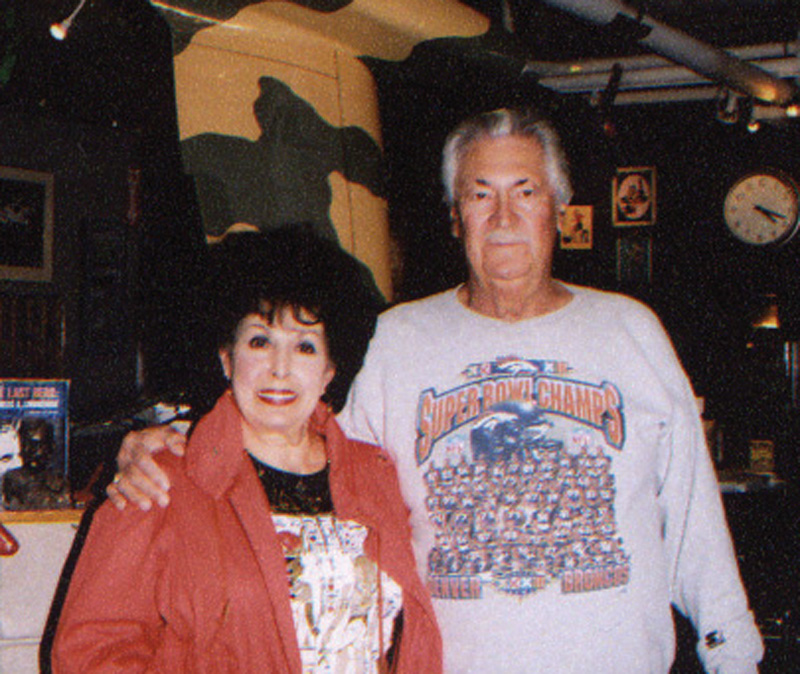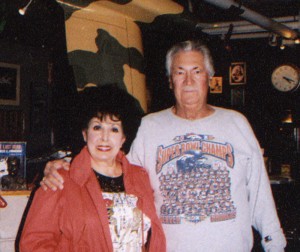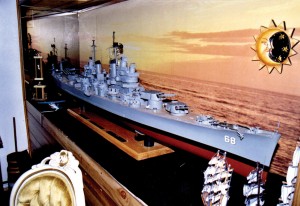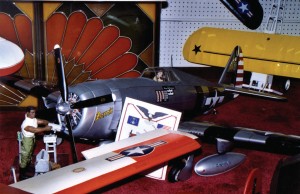By Stuart Leuthner
In the 1950s, a great number of American boys had a fleet of model airplanes hanging from the ceiling in their bedrooms. Some thought of it as their very own “Air Force.” They would lay there imagining the howl of mighty engines and the chatter of machine guns as Mustangs, Thunderbolts and Messerschmitts twisted and turned in terrific fantasy battles.
Bud Turk, a Denver entrepreneur, was that kind of a child, too, except when he grew up he took the concept of a model-plane air force to a whole new level.
“I used to buy ten cent Comet kits–balsa wood and tissue models with rubber band motors,” he said. A model airplane contest was held every year at a local airport and one of Turk’s neighbors was a contestant. Turk laughs, “I’ll never forget the model that he entered. It was a Megow Quaker Flash free-flight airplane. From then on, I was hooked.”
After serving in the Merchant Marine during World War II, Turk returned to southern California. He joined San Bernardino’s fire department and built model airplanes in the firehouse between calls. In his spare time, he also dabbled in magic and hypnosis. Billed as “The Magical Turk,” his act impressed the president of a large water softener company who offered him a sales job. Six months later, Turk owned his own company and soon had sales offices throughout Southern California.
Successful in a variety of business ventures, including central vacuum systems and electronics, Turk moved to Denver in 1959. His last enterprise was Prestige Properties, Ltd., a real estate company specializing in mountain properties.
While Turk pursued his career and raised a family, model airplanes were relegated to the back burner. The itch, however, was still there. Although he had little time to build models, Turk began collecting them.
“That was during the 1960s,” he remembers. “The first model I bought was a radio-controlled Piper Tri Pacer that was hanging up in a local hobby shop.”
Until the advent of radio control, model airplanes were on their own once they were launched into the wild blue yonder. This could often lead to a splintered pile of balsa wood or lost airplanes.
Attempts were made to program a model’s flight, like attaching pendulums to the elevator or rudder, but none of it proved practical. Crude when first developed in the 1930s, tremendous strides have been made with radio control and today’s airplanes are technological marvels. The pilot holds a transmitter and manipulates the joy sticks. Radio signals are sent to a receiver in the airplane. The signals activate servo motors that operate the elevator, rudder and ailerons. Sophisticated models have a throttle, retractable landing gear, brakes and flaps.
In 1987, Turk opened a store, Prestige Toys for Big Boys, in the building that was home to his real estate business. He describes the shop as “the store for the man who hasn’t grown up, but his allowance has.” Prestige Toys featured an upscale assortment of kits and built-up models.
“I wasn’t trying to make money, but just break even so it would pay for my hobby,” he said.
The store also provided Turk with a place to display his ever-growing collection. He has regrets when he remembers some of the models he sold.
“I had a beautiful B-24,” he said. “It had four engines and flew wonderfully. Another one that I miss was a Waco biplane built by Noel Hess, who is a world-class model builder.”
Many of Turk’s planes, which today number more than 300, were built by the model airplane world’s premier craftsmen. Surprisingly, most world-class builders do not fly their own airplanes. Or, maybe not surprising at all.
“Somebody who sits in a basement for six months putting an airplane together doesn’t want to see it pile up,” Turk observes. “And sooner or later, if you fly them enough, every plane is going to crack up.”
The majority of airplanes in Turk’s collection took longer than six months to build. A magnificent Stinson SR-9 was completed over seven and a half years by a team of dedicated builders. The amazing model has every detail found on the real airplane, right down to a working dome light in the cockpit and miniature charts in the seat pockets. The SR-9 has never been flown and if, and when it is, Turk will not be at the controls.
“I fly a lot of airplanes,” Turk says. “But I’m not a kid anymore and my eyes aren’t what they used to be. I’m not going to destroy an expensive model just to indulge my ego.” Asked what the Stinson is worth, Turk shrugs. “I guess I could sell it for $10,000, but I would never let it go.”
When Turk wants to fly his best airplanes, he has several expert pilots he can call on to put them through their paces. This is especially true when it comes to the jets. Recent years have seen the introduction of miniature jet engines that emulate their full-sized counterparts. Burning kerosene or propane, model airplanes powered by these engines are capable of 200 mph.
“I’ve sold all my jets,” Turk declares. “You can’t let a jet get out in front of you. It becomes a dangerous projectile and a pilot has to have a lot of experience before trying to fly one.”
When Turk puts one of his airplanes in the hands of a pilot, he’s realistic about the risks.
“In spite of the best equipment, meticulous pre-flight inspections and an expert pilot, a crash is always possible,” he said. “Once I hand the transmitter to a pilot, it’s not their fault if the plane crashes. There are so many things that can go wrong. A little thing like a broken hinge can mean disaster.”
Prestige Toys did well until Colorado’s economy faltered in the late 1980s. Turk closed the store in 1992.
“When it started losing money it wasn’t any fun,” he frowned.
Needing a place to display his collection, he renovated a long unused basement in his building and created an inner sanctum he calls Turk’s Museum. Descending the stairs, one enters through a nondescript door. Once inside, a visitor is surrounded by a model wonderland. Airplanes are everywhere–hanging from the ceiling and walls, roosting on shelves, parked on the floor. It’s also obvious that his interests extend far beyond airplanes.
“I’ve got boats, cars, a radio controlled tank that shoots fire and a radio-controlled golf cart,” he says.
Although he always has his eye out for a special addition to his collection, Turk doesn’t have to go looking for models.
“My collection has become known to a lot of people in the model world; I’m always getting calls from guys asking me if I want to buy this or that airplane,” he explains. “I’m beginning to run out of room and I’m getting real picky about what I buy. In fact, I’m in the process of selling off some of my airplanes so I can replace them with better models.”
A visit to Turk’s Denver home yields more airplanes. His garage is filled with WWI aircraft, like something out of “The Blue Max” or “Hell’s Angels.” A custom trailer, used to carry models to air shows, is filled with planes. Turk also rents several storage lockers to accommodate the overflow.
A recent trend in radio controlled model airplanes has been the use of electric motors for power. Gasoline engines are noisy, and as real estate development spreads, flying fields are becoming scarce, unless a modeler is willing to do a lot of driving. Known as “park flyers,” the electric airplanes can be flown almost anywhere.
“The electrics aren’t only quiet, but you don’t need fuel and there’s no mess,” Turk notes. “The batteries can be recharged with the cigarette lighter socket in your car.”
Turk and his wife Roxie winter in Carlsbad, Calif. He keeps several of the “park flyers” there.
“I have a P-51 and a Cessna; they’re a lot of fun,” he said. “I like the big airplanes, but the electrics don’t take up a lot of room in the townhouse and I can go flying just about anyplace.”
Bud Turk has put together an amazing, one-of-a-kind collection. His museum is not unusual in that it includes so many magnificent museum quality models–there are many museums with outstanding models. The thing that makes Turk’s collection unique is the fact that his models can be flown. Watching these creations fly is a wonderful experience, but it also can be risky. He remembers a T-6 Texan of which he was especially fond.
“It was a big airplane that really looked good and flew great,” he said. “I was flying it one afternoon and put it into a loop. The plane wasn’t high enough and in it went. My wife looked over at the wreck and said, ‘It could have been worse.’ I’m standing there looking at what was once a beautiful airplane, tears running down my face. I asked her, ‘How the hell could it be worse?’ She grinned and said, ‘You could have been in it.'”














